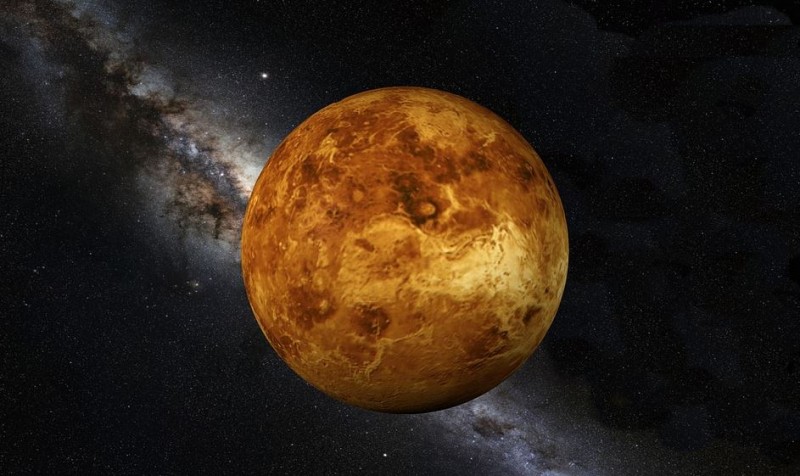
Venus, often referred to as Earth's sister planet due to its similar size and proximity, holds a rather peculiar timekeeping secret. In stark contrast to our planet's 24-hour day and 365-day year, Venus boasts a day longer than its own year! This means that it takes Venus about 243 Earth days to complete one rotation on its axis, while its orbit around the sun takes only about 225 Earth days. Let's delve into this fascinating phenomenon and uncover the mysteries behind Venus's bizarre time warp.
Understanding Venus
Venus is the second planet from the sun in our solar system, and it is often described as Earth's twin due to its similar size and rocky composition. With a diameter just slightly smaller than Earth, Venus is often compared to our own planet in terms of its geological characteristics and structure.
Rotational Period: A Leisurely Spin
Venus's rotational period is the time it takes for the planet to complete one full rotation on its axis. Surprisingly, Venus spins in the opposite direction to most other planets, including Earth, which means it has a retrograde rotation. This means that if you were to stand on the surface of Venus and look up at the sun, you would see it rise in the west and set in the east.
Length of a Venusian Day
Due to its slow and retrograde rotation, a day on Venus is incredibly long when compared to Earth. A single day on Venus, from one sunrise to the next, takes approximately 243 Earth days. This means that a Venusian day is more extended than an entire Earth year!
Orbital Period: A Swift Journey
While a day on Venus seems to stretch indefinitely, its orbital period around the sun is surprisingly shorter than its Earth counterpart. Venus takes about 225 Earth days to complete one orbit around the sun, making its year significantly shorter than its day.
Understanding the Discrepancy
The stark contrast between the length of a day and a year on Venus can be attributed to its unique rotational characteristics. The slow and retrograde rotation causes a significant time difference between each sunrise, leading to a much longer day. In contrast, its orbital path around the sun is comparatively swift, resulting in a shorter year.
Similarities with Earth's Moon
Interestingly, there is a similarity between Venus's rotational and orbital periods and those of Earth's moon. The moon takes about 27.3 Earth days to rotate on its axis and approximately 27.3 days to orbit the Earth. This synchronicity is not a mere coincidence but is the result of gravitational interactions between the celestial bodies.
Impact on Venusian Climate
The peculiar timekeeping on Venus plays a crucial role in shaping its extreme climate. Venus experiences a harsh greenhouse effect, trapping heat in its atmosphere, making it the hottest planet in our solar system. The prolonged exposure to sunlight during the extended day exacerbates this effect, while the shorter year has a minimal impact on temperature variations.
Historical Discoveries
The knowledge about Venus's rotational and orbital periods has been a culmination of centuries of observations and discoveries. Early astronomers like Galileo Galilei and Johannes Kepler contributed to our understanding of the celestial motions that affect Venus's timekeeping.
Space Exploration to Venus
Several space missions have been sent to Venus to study its unique characteristics, including its timekeeping. Probes like NASA's Magellan mission and the Soviet Union's Venera program provided valuable insights into the planet's surface and atmosphere, aiding in the exploration of this enigmatic world.
Time Dilation and Perception
The extraordinary time dilation experienced on Venus would be an intriguing concept for any hypothetical inhabitants. Their perception of time would undoubtedly differ greatly from our own, as they would witness days that spanned many Earth months while experiencing a year in less time than their day.
Implications for Future Space Travel
Understanding the effects of time on different celestial bodies is crucial for planning future space missions. The time discrepancies on Venus would need to be taken into account when scheduling and coordinating exploratory missions to the planet.
Venus's peculiar timekeeping, with a day longer than its year, remains an astounding celestial oddity. The planet's slow, retrograde rotation leads to an incredibly lengthy day, while its swift orbital path around the sun results in a shorter year. This phenomenon offers an exciting glimpse into the intricacies of our solar system and serves as a testament to the diverse and mysterious nature of the cosmos.
Josephine Chaplin, Actor and Daughter of Charlie Chaplin no more!
Govt Action Looms for Twitter after Viral Video of Manipur Women Paraded Naked
Manipur Unrest: CM Urges Thorough Probe into Viral Video's Authenticity